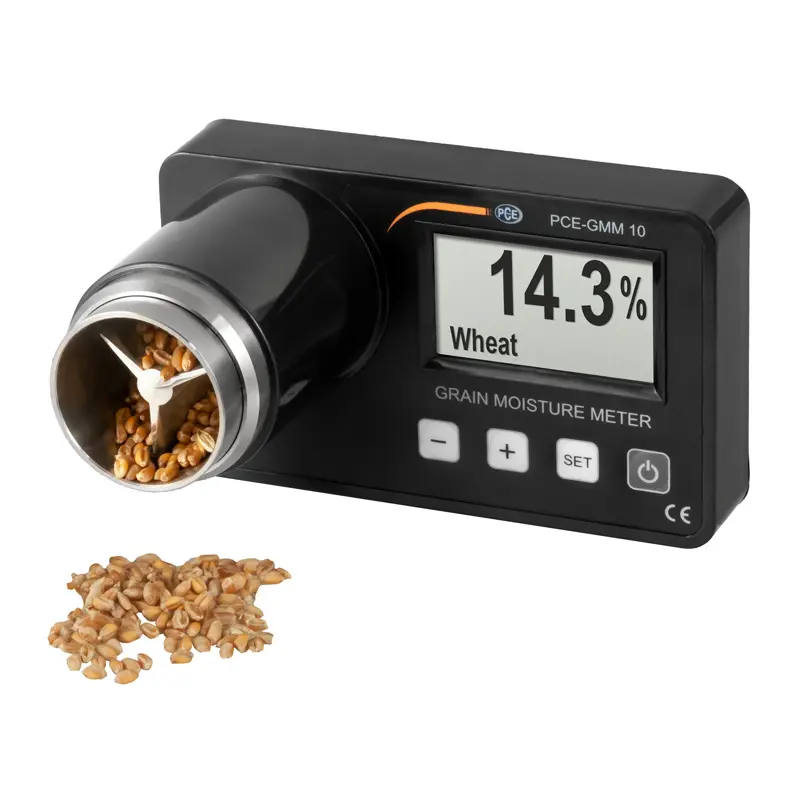How to Use a Moisture Meter to Detect Hidden Water Damages in Your Residential property
How to Use a Moisture Meter to Detect Hidden Water Damages in Your Residential property
Blog Article
Recognizing the Value of a Wetness Meter in Protecting Against Mold And Mildew and Water Damage in Your Home
In the world of home maintenance, the presence of dampness can usually be a silent yet powerful adversary, capable of causing pervasive mold growth and perilous water damage if left untreated. Recognizing the relevance of a moisture meter in this battle is not merely an option but a tactical requirement.

Significance of Dampness Discovery
Efficient moisture detection techniques are crucial for protecting properties and preventing potential mold and mildew development and water damages. Dampness can permeate right into various building materials, leading to architectural issues and carcinogen - Moisture Meter. By using a wetness meter, homeowner can proactively identify areas prone to excess moisture, permitting timely intervention and mitigation strategies
Moisture meters supply exact analyses of wetness levels in different materials such as wood, drywall, and concrete. This information assists in pinpointing locations of concern, even in hidden or hard-to-reach areas. Early discovery of dampness build-up enables punctual repair work or modifications to avoid further damages.

Exactly How Wetness Meters Work
Moisture meters play an essential function in the aggressive identification of excess wetness, helping in the avoidance of potential mold and mildew development and water damages by providing accurate analyses of moisture levels in different structure products. Some advanced dampness meters pin both integrate and pinless modern technologies for extensive wetness discovery. Understanding how moisture meters function is crucial for accurate and timely wetness degree analyses, allowing reliable preventive steps against mold and water damages.
Detecting Early Warning Signs
Upon initial evaluation of a home, acknowledging refined indications of excess wetness comes to be crucial in the very early detection of possible mold and mildew development and water damage. Water stains can signify leaks or seepage, while peeling off paint or wallpaper might be a result of wetness compromising the bond of these materials to the surface. In addition, an increase in allergic reaction symptoms or respiratory issues among residents may suggest the presence of mold and mildew due to excess moisture.


Avoiding Mold Growth
Identifying very early caution signs of excess dampness within a property not just allows punctual discovery of possible mold development and water damage however additionally acts as a proactive action in protecting against the discover this info here spreading of mold. To effectively avoid mold and mildew development, it is important to resolve any type of sources of moisture quickly. This can consist of taking care of leaks in pipes, roofs, or windows, making sure correct ventilation in damp locations like kitchens and washrooms, and making use of dehumidifiers in high-humidity spaces. Routinely maintaining the home and examining's pipes, roof covering, and rain gutters can additionally aid in avoiding water breach that can result in mold and mildew development.
Along with attending to moisture sources, maintaining indoor humidity levels listed below 60% can dramatically prevent mold and mildew development. Appropriate air flow, ample insulation, and making use of a/c unit or followers can aid regulate indoor moisture degrees. Keeping track of moisture levels in locations vulnerable to dampness, such as basements and creep spaces, making use of a moisture meter can also help in early detection of elevated moisture levels and prospective mold growth. By taking proactive procedures to avoid excess moisture and mold development, home owners can protect their home and indoor air top quality.
Advantages of Regular Tracking
Regular surveillance of dampness levels in a residential property can play an essential role in keeping a healthy indoor setting and protecting against prospective mold and mildew and water damage. By on a regular basis checking dampness levels, house owners can discover any type of problems quickly and take required actions to protect against mold development and water damages.
Furthermore, normal monitoring allows homeowners to track patterns and fads in moisture levels over time. Ultimately, the constant tracking of dampness degrees encourages home owners to shield their residential property, guard their wellness, and protect the honesty of their indoor setting.
Conclusion
In conclusion, the usage of a more information dampness meter is essential in preventing mold and mildew and water damage important source in homes. By detecting very early warning signs of dampness, homeowners can take aggressive procedures to prevent mold development and pricey repairs.
By utilizing a dampness meter, building proprietors can proactively recognize locations vulnerable to excess dampness, allowing for prompt intervention and reduction methods.
Moisture meters offer accurate analyses of moisture degrees in different materials such as drywall, timber, and concrete.Dampness meters play a pivotal function in the positive recognition of excess moisture, assisting in the avoidance of possible mold growth and water damage by supplying precise readings of moisture degrees in numerous building products. Understanding just how moisture meters feature is necessary for exact and timely moisture degree evaluations, enabling reliable precautionary steps versus mold and mildew and water damage.
Keeping an eye on wetness degrees in areas susceptible to moisture, such as basements and creep rooms, using a dampness meter can also assist in early detection of raised dampness levels and prospective mold and mildew growth.
Report this page